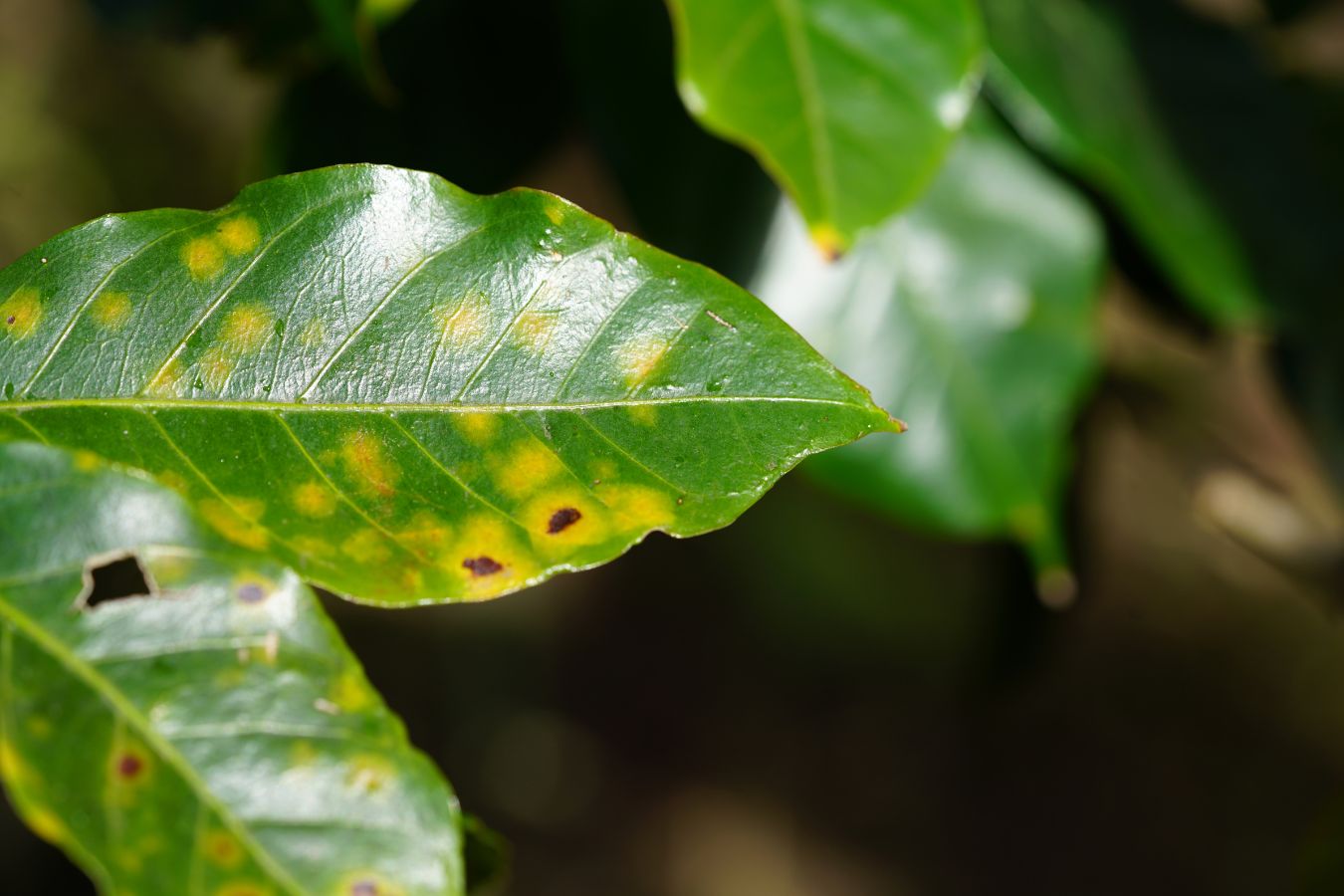
Hemileia vastatrix (Spanish) is a fungus of the Pucciniales type (formerly known as Uredinales) that causes coffee leaf rust (CLR). Rust was first described and named by Berkley and Broom in Gardeners Chronicle – November 11, 1869, through specimens sent from Sri Lanka, where the disease first spread and caused extensive damage to trees. Coffee here.
Epidemiology & Harm of Hemileia Vastatrix
Hemileia differatrix is an obligate parasitic fungus that lives only on the genus Coffea Arabica plants. Therefore, the disease does not affect coffee plants of the Robusta variety. Usually, rust disease only attacks the coffee leaves and is rarely found on the stem and fruit. The growth of the fungus Hemileia vastatrix forms round yellow-orange spots (colonies) on the undersides of coffee leaves. These spots grow more extensively and prevent the photosynthesis of leaves. As the disease progresses, the leaves fall, mass killing the coffee plant, the damage is not significant at the time of the disease outbreak, but it takes 3-5 years for the next generation of young trees to be harvested.
In the 1920s, CLR was found widely throughout Africa and Asia. It arrived in Brazil in 1970, and from there, it spread rapidly to all coffee regions of the country by 1975. From Brazil, The disease spread to Costa Rica and Colombia in 1983 and then to most coffee-growing areas in Central and South America in 1981. Since 1990, coffee rust has become an epidemic of coffee trees in all significant coffee-producing countries.
Related post: